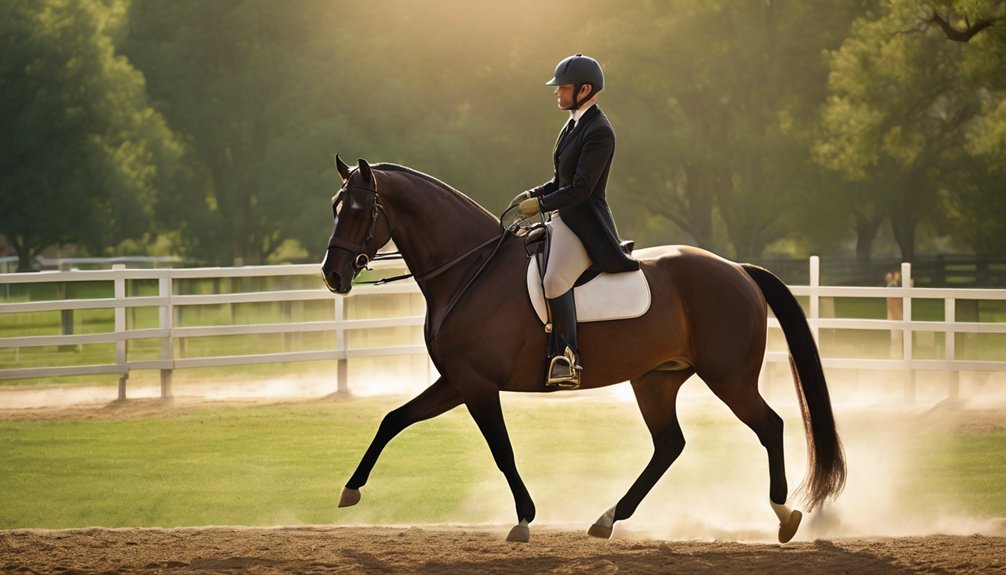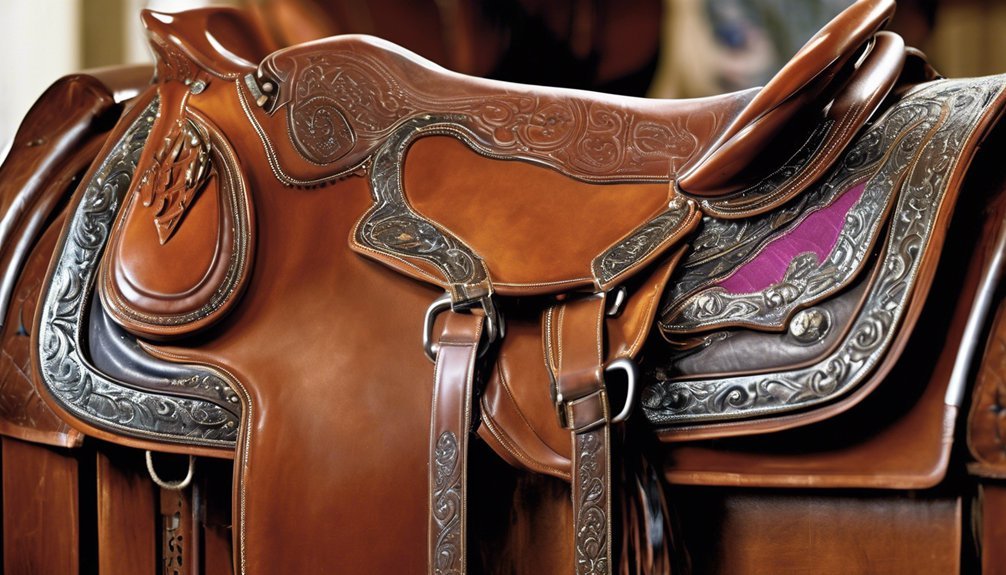
Did you know that nearly 60% of competitors in halter classes train without a professional trainer? This means you can definitely take on the challenge yourself. With the right approach, you can effectively prepare your horse for a successful showing. From assessing your horse's skills to mastering showmanship techniques, there are essential steps to follow. Let's explore how you can set up a solid training plan that leads to impressive results.
Key Takeaways
- Evaluate your horse's conformation and skills regularly to identify strengths and areas for improvement.
- Create a structured training schedule with clear goals and consistent frequency to stay on track.
- Use quality halter equipment and maintain a grooming kit to enhance your horse's appearance and comfort.
- Practice showmanship techniques by focusing on body positioning, eye contact, and smooth transitions while leading.
- Record your progress and adjust your training plan based on evaluations and observed setbacks.
Understanding the Halter Class Basics
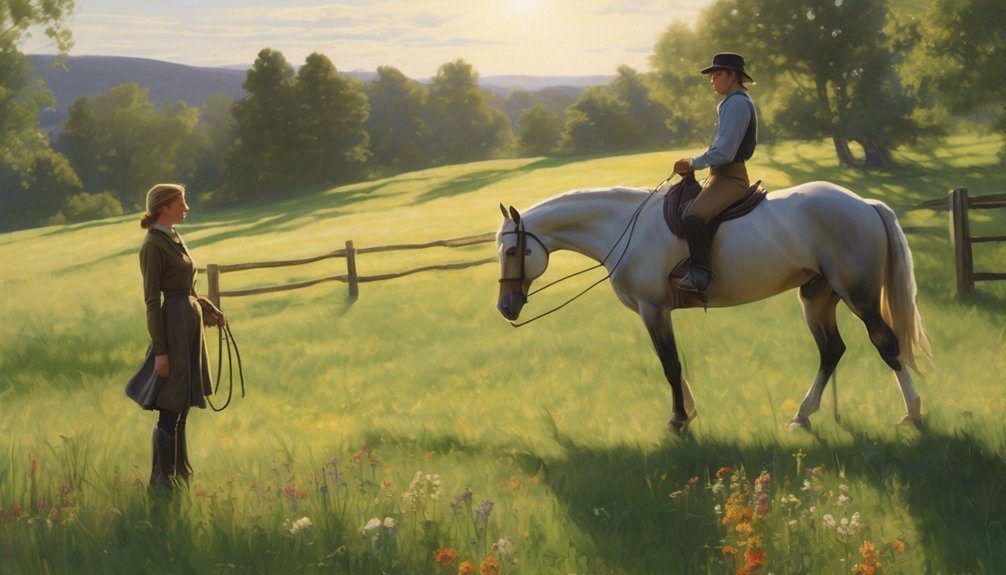
Understanding the fundamentals of a halter class is essential for both you and your horse. In a halter class, the primary focus is on your horse's conformation, movement, and overall presentation.
You'll want to familiarize yourself with the judging criteria, which often includes aspects like structure, balance, and temperament. Each judge will evaluate how well your horse embodies the breed standard, making it crucial for you to present your horse confidently and effectively.
Remember, this is your opportunity to showcase the bond you share. By mastering these basics, you not only enhance your horse's chances of success but also strengthen your connection.
Embrace the challenge, and enjoy the process of learning and growing together in the halter class community.
Assessing Your Horse's Current Skills
To effectively prepare for a halter class, you need to assess your horse's current skills and strengths. Start by evaluating conformation, as it plays a crucial role in presentation. Look for attributes like balance, muscle tone, and overall appearance.
Here's a handy table to help you identify your horse's strengths:
| Skill | Strengths | Areas for Improvement |
|---|---|---|
| Conformation | Well-defined muscle | Adjust neck position |
| Gait | Smooth movement | Improve pacing |
| Stance | Confident posture | Train for square stance |
| Showmanship | Calm demeanor | Enhance responsiveness |
Essential Equipment for Halter Training
Having the right equipment is crucial for successful halter training, and it can make a significant difference in your horse's performance.
Start with quality halter equipment, including a well-fitted halter and lead rope. These tools ensure your horse is secure and comfortable during training. A grooming kit is essential, too; maintaining your horse's coat helps them shine in the ring.
Additionally, consider training tools like cones or markers to help establish boundaries and improve your horse's responsiveness. A good pair of gloves can enhance your grip on the lead, keeping you confident.
Investing in the right equipment not only supports your horse's training but also fosters a sense of belonging in the halter community. You're on the right path!
Creating a Training Schedule
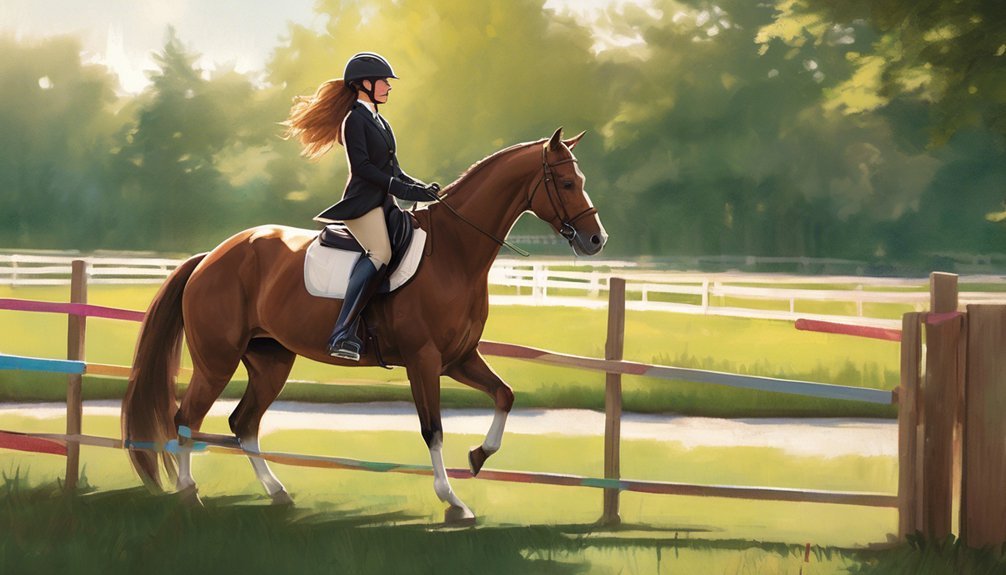
Creating a training schedule is essential for maximizing your horse's potential in halter classes. A well-structured plan not only keeps you organized but also boosts your horse's performance.
To create an effective schedule, consider these steps:
- Set clear goals: Define what you want to achieve in each training session.
- Determine training frequency: Decide how often you'll train each week—aim for consistency!
- Mix up activities: Incorporate various exercises to keep sessions engaging and productive.
- Track your progress: Record achievements and setbacks to adjust your plan as needed.
Key Training Techniques to Master
With a solid training schedule in place, it's time to focus on the key techniques that will help your horse shine in halter classes.
First, master halter positioning by teaching your horse to stand squarely and confidently. Practice leading them in a straight line, ensuring they're responsive to your cues.
Next, prioritize horse grooming; a well-groomed horse isn't only more appealing but also demonstrates your commitment to excellence. Brush your horse regularly, paying special attention to their mane, tail, and hooves. These grooming sessions also strengthen your bond.
Lastly, practice maintaining eye contact and a confident posture, as this will convey your partnership during the class. With dedication, you'll see improvement and foster a sense of belonging in the show community.
Practicing Showmanship and Presentation
As you prepare for the halter class, practicing showmanship and presentation is crucial to impressing judges and showcasing your horse's best qualities.
Focus on these key aspects to elevate your performance:
- Body Positioning: Stand tall and confident; this projects authority and control.
- Eye Contact: Maintain eye contact with the judges; it shows confidence and engagement.
- Grooming: Ensure your horse is clean and well-groomed, highlighting its best features.
- Movement: Practice leading your horse smoothly; transitions should be fluid to demonstrate your partnership.
Building a Strong Bond With Your Horse
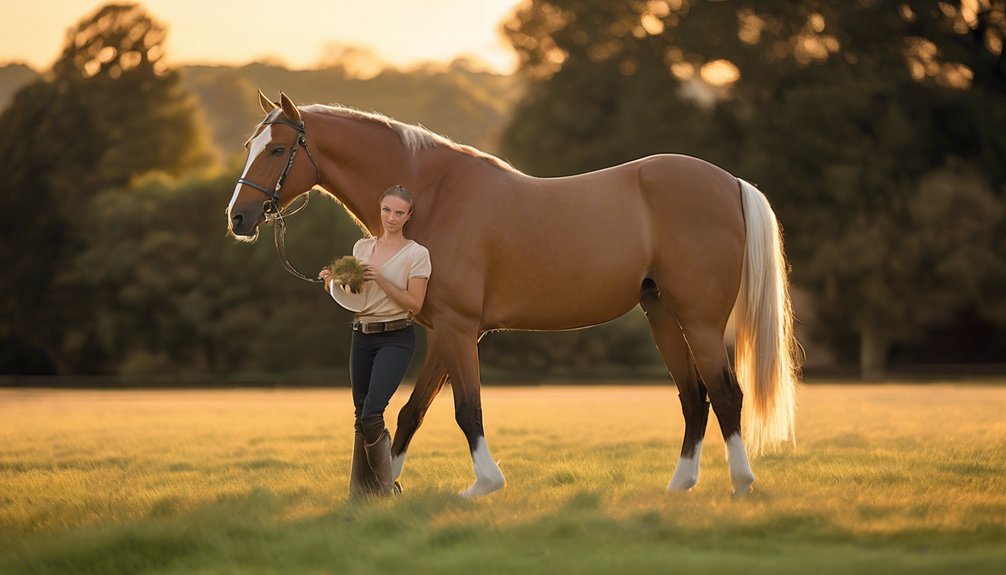
A strong bond with your horse enhances not only your performance in the halter class but also the overall experience for both of you.
To build this connection, engage in trust exercises that encourage cooperation and mutual respect. Simple activities like lead-line walking or desensitization can help your horse feel secure around you.
Focus on developing your communication skills; learn to read your horse's body language and respond appropriately. Be patient and consistent, rewarding your horse for small successes. This creates a positive learning environment.
Preparing for the Show Day Experience
Preparing for the show day experience is crucial to your success in the halter class, so make sure you're organized and ready. A solid plan will ease your nerves and boost your confidence.
Use this show day checklist to prepare:
- Grooming Supplies: Pack brushes, hoof pick, and any products for a polished look.
- Show Attire: Lay out your show clothes and ensure they're clean and pressed.
- Horse Essentials: Include halter, lead rope, and any necessary tack.
- Mental Preparation: Visualize your performance and practice deep breathing to stay calm.
Frequently Asked Questions
What Are Common Mistakes to Avoid in Halter Training?
In halter training, avoid common mistakes like improper halter positioning and neglecting horse posture. Focus on maintaining a relaxed demeanor, ensuring your horse stands squarely, and rewarding good behavior to build trust and confidence together.
How Can I Tell if My Horse Is Stressed During Training?
You might notice subtle changes in your horse's body language—like pinned ears or a tense posture. These stress signals can indicate discomfort. Stay observant and adjust your approach to create a more relaxed training environment.
What Should I Do if My Horse Refuses to Cooperate?
When your horse refuses to cooperate, assess its body language. Use positive reinforcement and adjust your training techniques. Stay patient and consistent; building trust will help improve horse behavior and strengthen your bond. Keep going!
Can I Use Treats as Rewards During Training Sessions?
Yes, you can use treats as rewards during training sessions! Choose treat types your horse enjoys, and focus on reward timing. Reinforce positive behavior immediately to build strong connections and encourage cooperation during your training efforts.
How Do I Handle Distractions During Practice?
To handle distractions during practice, use distraction techniques like controlled exposure and focus exercises. Gradually increase stimulus intensity while rewarding your horse for staying focused. This builds confidence and strengthens your bond, making training enjoyable for both of you.
Conclusion
Training for a halter class without a trainer may seem challenging, but with dedication and discipline, you can succeed. Focus on assessing your horse, mastering essential techniques, and building a strong bond. Embrace the journey of learning, practicing consistently, and refining your skills. Remember, every grooming session, every leading exercise, and every moment spent together counts. So, stay motivated, stay committed, and enjoy the process. You've got what it takes to shine in the ring!



